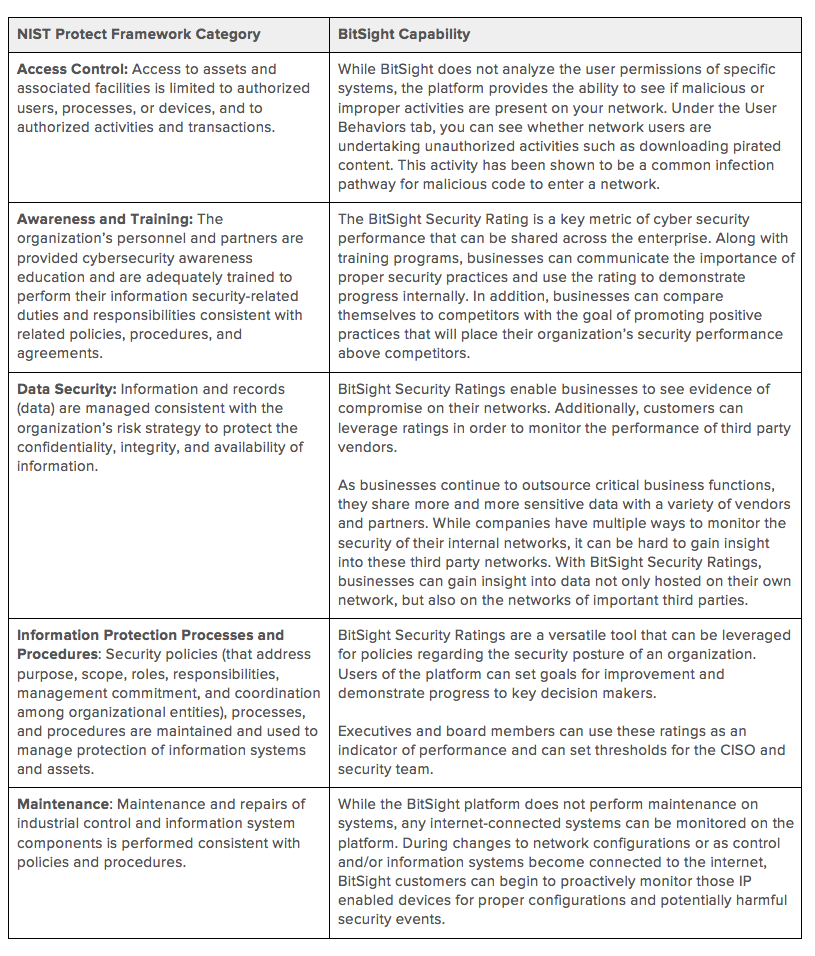
This is the third post in a series exploring how Security Ratings can address key components of the NIST cybersecurity guidelines. You can read the first post here and the second post here.
The NIST Cybersecurity Framework outlines five Framework Functions that organizations can use to better protect themselves against cyber threats. The second of these Framework Functions is Protect, which NIST describes as, “Develop and implement the appropriate safeguards to ensure delivery of critical infrastructure services.” The Protect Framework Function is a focused on preventative measures to mitigate the potential of a major security event, such as a breach. Within this Framework Function, NIST further defines categories, subcategories and references from other widely adopted standards, such as COBIT (Control Objectives for Information and Related Technology) and ISO/IEC guidelines.
The NIST standards clearly place importance on the need for formalized risk management processes and communication of security posture throughout the enterprise. To address these challenges, many businesses have adopted Bitsight Security Ratings for Benchmarking in order to effectively communicate performance to stakeholders and identify area of improvement. Below Bitsight has provided a breakdown of how its product complements the NIST Identify Framework.
